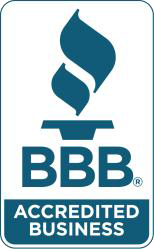
After months (maybe even years) of waiting, you’ve finally resolved to contact us to find out if you should get hearing aids. You’ve been resisting this like so many other people. But the stress of living life without being able to hear has finally become too much.
So when you do finally come in and then you learn that you will still need to wait another couple of weeks before you get your custom fit hearing aids, it can be discouraging.
That’s another two weeks coping with those lost moments before you can begin getting them back. Of course, there is another option: a deceptively basic device add-on, called hearing aid domes.
What are hearing aid domes?
They sound sort of grand, right? Like hearing aids dueling in some type of ancient mythical arena. Welcome to the Hearing Aid Dome: Two hearing aids enter…but only one leaves!
Well, it’s a little less exciting than that. But they are rather neat. Hearing aid domes are like tiny earbuds that you can put on the end of your hearing aid speaker. Generally made of plastic or silicone, they fit over that little part that goes inside your ear canal, connecting to the tubing of your hearing aid. They’re made for behind-the-ear or inside-the-ear-canal models of hearing aids. Here are the two general functions:
- They position the hearing aid speaker (the part that you listen to) in an optimal position inside of your ear canal. And they help secure the speaker in place. That way it’s not wiggling around.
- They can help control the amount of external sound you hear, particularly when that outside sound can interfere with the function of your hearing aid. Hearing aid domes work to enhance the sound quality and offer an extra bit of control when used correctly.
Domes for hearing aids look kind of like those bulbs at the end of your earbuds. There are several hearing aid dome styles, so we will help you pick the one that’s best for your situation.
Different types of hearing aid domes
Open types and closed types each let in different amounts of background sound.
Hearing aid domes come in different kinds, including:
Open Domes
With these, more sound is able to pass through little holes in the dome. You get the benefit of amplification while still being able to process external sounds.
Closed Domes
These domes let less outside sound in through fewer and smaller holes. For people with more profound hearing loss, background noise can be quite distracting and this type of dome can help with that.
Power Domes
Power domes completely block the ear canal and have no holes. This means very little to no sound at all can get into the ear canal. These are most effective for extremely profound hearing loss.
Do hearing aid domes need to be swapped out?
For best results, you should swap out your hearing aid domes every 2-3 months (your ears are not the dirtiest place, but they aren’t the cleanest, either).
For most individuals, hearing aid domes can be used right out of the box. In fact, that’s one of their primary benefits.
What are the benefits of hearing aid domes?
Hearing aid domes are prevalent for a wide array of reasons. Here are a few common advantages:
- No fitting time: One of the most prominent (and immediate) benefits of hearing aid domes is that you don’t have to wait. You can un-box them, pop them on your hearing aid and you’re ready to go. This is an ideal option for people who don’t want to wait weeks for custom fit hearing aids. And if you want to try out a hearing aid before you purchase it, they’re good for that too. With hearing aid domes, patients don’t have to sacrifice sound clarity to get faster results.
- The external world sounds more clear and natural: You can be sure your hearing aids create a clear, natural sound quality by picking the right type of hearing aid domes. Most likely, some sound will still get in and that’s the reason for this. Again, this depends on the type of dome, and we will help you with this.
- You’re able to hear your own voice: A natural level of sound can get through some types of hearing aid domes. So you will still be able to hear your own voice. You’re more likely to wear your hearing aids more often if they sound clear and natural.
- Hearing aid domes can be more discrete: Hearing aid domes are pretty small, particularly when they’re tucked inside your ear. In this way, they can be rather discrete.
And again, this will mean you’re not as likely to leave your hearing aid sitting on your nightstand.
What are the downsides to hearing aid domes?
You’ll want to be mindful of some of the drawbacks and trade-offs that come with hearing aid domes. Among the most prevalent are the following:
- They can at times be uncomfortable: Having something filling the ear canal can be really uncomfortable for some individuals. Hearing specialists call this feeling “occlusion,” and some individuals can find it intensely uncomfortable. In addition, if you take your hearing aid dome out too quickly (or don’t clean it frequently enough), there’s the possibility that it might separate from the tubing and get lodged in your ear canal. If this occurs, you’ll most likely need to come see us to have it removed.
- Occasionally, they can cause feedback: Feedback, though not very common, occasionally does occur. This is particularly true for those who are dealing with high-frequency hearing loss.
- Some types of hearing loss aren’t suitable for hearing aid domes: For example, if you are suffering from profound hearing loss or high frequency hearing loss, hearing aid domes might not be the preferred solution for you. For people with high-frequency hearing loss, again, it’s the feedback that becomes the issue. It’s the hearing aid itself that’s a problem with profound hearing loss: you’ll require something that’s bigger and which has more power than the styles typically associated with hearing aid domes.
Should I use hearing aid domes?
Ultimately, the choice of whether you should use hearing aid domes or not is largely a personal one. We can help but it’s your choice. And we will look at your individual needs and help advise you on the pros and cons.
Some people may be better off waiting for a custom fitting. Others will create healthy lifelong hearing habits by choosing a solution that lets them start using their new hearing aids right away.
You have options and that’s the good thing.
The content of this blog is the intellectual property of MedPB.com and is reprinted here with permission.
The site information is for educational and informational purposes only and does not constitute medical advice. To receive a personalized free hearing test and hearing loss consultation, call today to set up an appointment.









